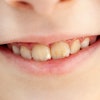
Although resin composites and sealants have become increasingly popular in pediatric dentistry, they can expose children to the controversial chemical bisphenol A (BPA). But such exposure is short-lived, according to a new study published in Pediatrics (October 2010, Vol. 126:4, pp. 760-768), and it remains unclear whether it poses a long-term health risk.
Through a literature review that included toxicological studies and material safety data sheets, researchers from Harvard Medical School, Mount Sinai School of Medicine, and Columbia University College of Dental Medicine found that BPA is released from dental resins through enzymes in saliva and is detectable in saliva for up to three hours after resin placement -- although how much is absorbed is unknown.
In addition, dental products containing the bisphenol A derivative glycidyl dimethacrylate (bis-GMA) are less likely to be hydrolyzed to BPA and have less estrogenicity than those containing bisphenol A dimethacrylate (bis-DMA), the researchers said. The authors suggest the more commonly used bis-GMA resins should be the preferred choice.
In the long run, the proven benefits of resin-based dental materials and the brevity of BPA exposure outweigh risks associated with the chemical, they concluded, and they recommend continued use with strict adherence to precautionary application techniques.
"Given the brevity of elevated exposure to BPA after sealant application, we recommend continuing application of resin-based sealants in dental practice and in school-based/school-linked dental-sealant programs," they wrote.
Endocrine disruptor
|
Discussing the safety of dental materials with patients Here are ADA recommendations on how to discuss the safety and effectiveness of dental materials with patients.
|
BPA has been linked to a host of health ills and banned by many plastic bottle manufacturers. Concerns about BPA stem from studies in lab animals and cell cultures showing it can mimic the hormone estrogen and become an endocrine disruptor.
But dental materials present a much smaller and infrequent exposure to BPA than more common sources, according to the American Academy of Pediatrics.
"The most significant window of exposure to BPA is during and immediately after the material is placed in the mouth," the academy said in a statement.
To reduce exposure following application, the study authors suggest rubbing the material with pumice to remove the top liquefied layer of the sealant. Rinsing the surface with water for 30 seconds immediately after application also has been shown to decrease salivary BPA levels to nearly baseline.
The researchers also recommend that manufacturers be required to report information on the chemical composition of dental products, and they should develop materials with less estrogenic potential.
However, the researchers warned that BPA should not be used on pregnant women.
They also noted that there is "negligible concern" to the reproductive ability of workers who are not regularly exposed to BPA and "minimal concern" to those whose jobs involve regular exposure to the chemical. They also noted that the FDA has not banned BPA from the market.
Even so, animal studies have led the National Toxicology Program and the FDA to express some concern about the potential effects of BPA on the brain, behavior, and prostate gland of fetuses, infants, and children.
If patients ask if there are BPA-free sealants, the American Dental Association recommends that dentists discuss glass ionomers with them. However, dentists should advise their patients that ionomers are less effective in caries prevention than resin-based sealants.
About half a dozen states in the U.S. have banned BPA in children's products, and U.S. Sen. Dianne Feinstein hopes to accomplish the same nationwide. An amendment to the food safety bill is scheduled for a vote in the U.S. Senate the week of September 13. Last week, however, the California Legislature rejected a BPA ban like the one Feinstein is proposing.
Copyright © 2010 DrBicuspid.com



















